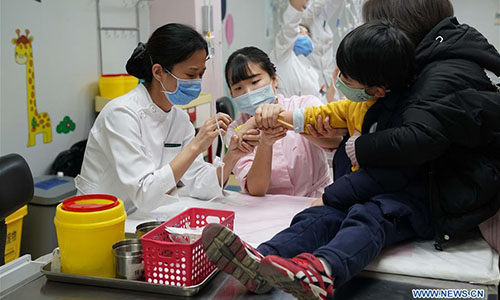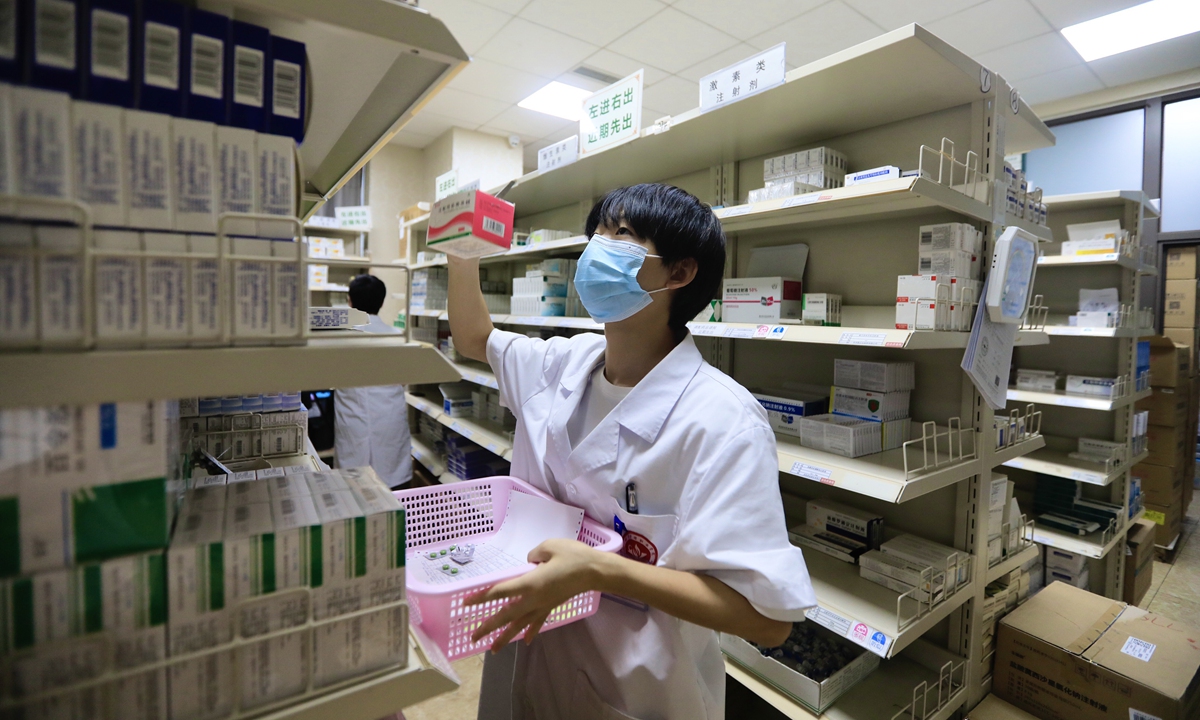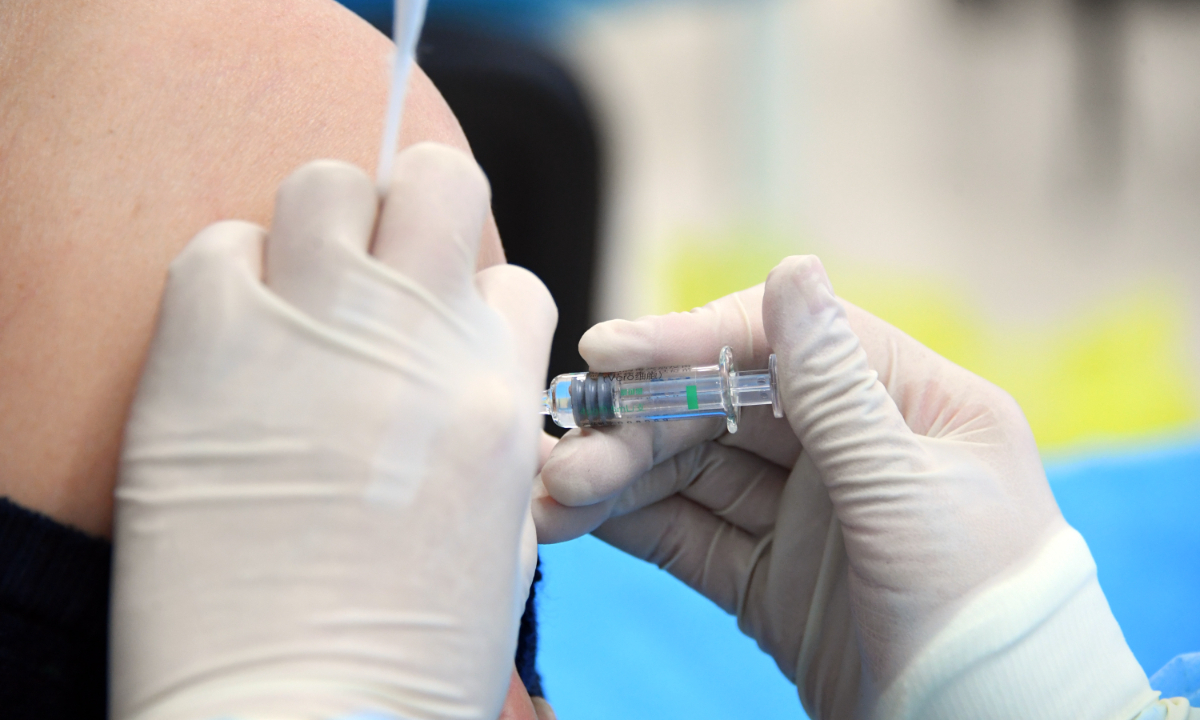
A child receives treatment at Beijing Children's Hospital in Beijing, capital of China, Jan. 10, 2018. China's health authority has urged strengthened monitoring and treatment in face of the current influenza outbreak. The National Health and Family Planning Commission (NHFPC) in a circular asked medical organs at all levels to reserve enough antiviral medicines, and allocate medical resources and equipment such as respirators and monitors for timely treatment of severe cases. The commission also demanded close monitoring of the mutation of flu virus strains, and suggested schools have daily check-ups for students. (Xinhua/Zhang Yuwei)
Chinese health authorities on Monday called for close attention to be paid to the prevalence of diseases such as mycoplasma pneumoniae, COVID-19, influenza, dengue fever and norovirus infection, as well as the strengthening of monitoring and early warning systems to track virus intensity and mutations, as the peak season for respiratory diseases has begun in China with the approach of winter.
It is necessary to improve follow-up services for key groups such as the elderly, children and patients with underlying diseases, and to optimize vaccination services, Mi Feng, a spokesperson with the National Health Commission (NHC), said at a Monday press briefing.
Hospitals in parts of the country have recently seen a rise in cases of mycoplasma pneumoniae, a pathogen that easily causes respiratory illnesses among children and teenagers. Based on recent data from the Beijing Institute of Respiratory Medicine, the detection rate of mycoplasma pneumoniae nucleic acid testing in adults is 5.59 percent, while in children it is 40.34 percent, Tong Zhaohui, the director of the Beijing Institute of Respiratory Medicine, said at the briefing.
An expert from the Shanghai Children's Medical Center told the Global Times that the number of visits to fever clinics and emergency rooms at major children hospitals in Shanghai has started to decline compared with the peak period about two weeks ago, but those key groups still need to take precautionary measures such as getting vaccinated.
During the winter season, there is commonly a higher occurrence of respiratory infections. However, this is consistent with previous years, and the prognosis for most cases is relatively good, so there is no cause for concern, Tong explained.
Medical experts also warned of a potential spike in COVID-19 infections this winter.
"Early antiviral treatment can not only reduce the risk of severe cases and long COVID in both the elderly and young people, but also effectively decrease the transmission and mutation of the virus," Lu Hongzhou, head of the Third People's Hospital of Shenzhen, told the Global Times.
From October 1 to 31, the Chinese mainland recorded 24 new COVID-19 deaths, all of which were caused by an underlying disease combined with COVID-19 infection, according to the latest report the Chinese Center for Disease Control and Prevention (China CDC) released on Friday.
The COVID-19 infection rate in China has been fluctuating but has been gradually declining recently. Since late August, the number of reported COVID-19 infections nationwide has been continuously decreasing for the past 10 consecutive weeks, Wang Dayan, director of the China National Influenza Center, National Institute for Viral Disease Control and Prevention, China CDC, said at Monday's press briefing.
All the circulating variants of COVID-19 globally and domestically are Omicron variants. Recent sampling of the virus collected has revealed that all of these variants belong to the XBB sublineage, and no variants with significant changes in their biological characteristics have been identified so far, said Wang.


